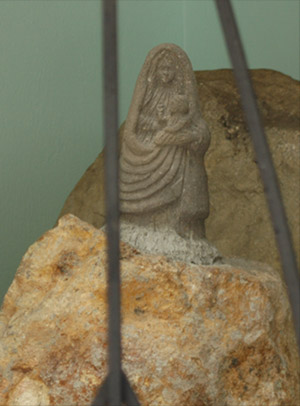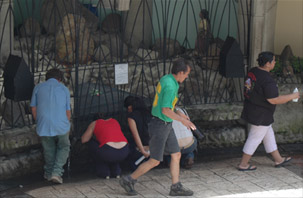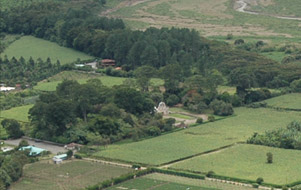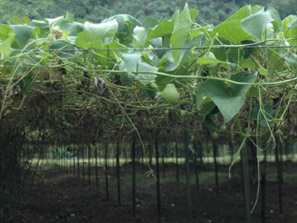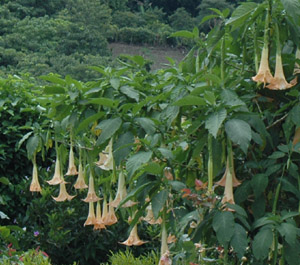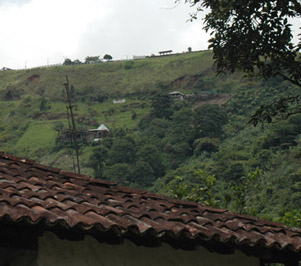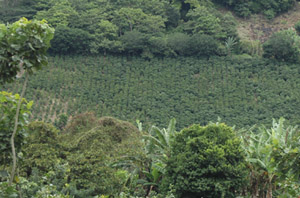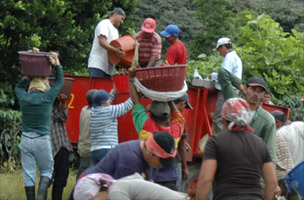Cartago and the Orosi Valley
Wednesday, September 6, 2006
Click on map text for any area.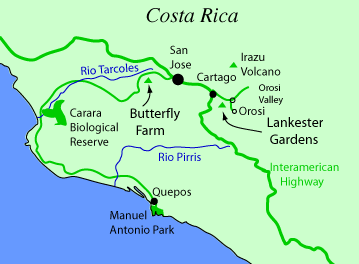 | Cartago was the original capital of Costa Rica and one of the oldest settlements of the colonial era, it contains the most traces of the country's Spanish Catholic colonial past. |
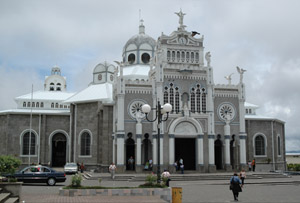 | Basilica de Nuestra Senora de los AngelesReturning to Cartago, we visited this famous basilica where the eight-inch black statue of La Negrita is housed. It can be seen mounted on a rock below, with a shrine built around it. It is the practice of those with special prayers to approach the altar down the aisle on their knees, sometimes starting from the front steps. |
The water from the spring which comes from under the stone is revered as holy water. This young mother has come to anoint her baby and her young son with it.
As we left Cartago and approached the Orosi valley, we passed this man leading a pair of oxen. I wondered what they were used for. Above right is a view of the valley center including the church ruins that we will visit later. It is the center section of the picture below, but I didn't know I was taking a picture of the ruins when I took it.
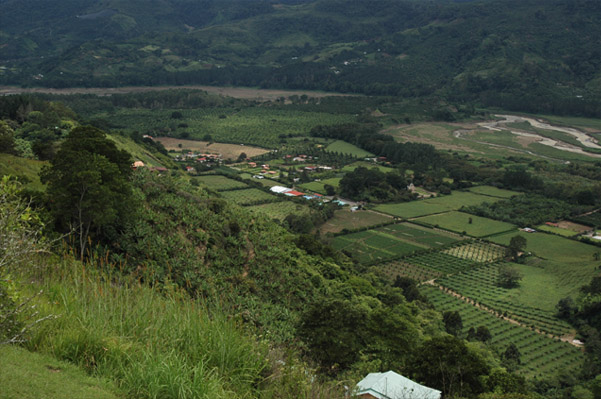 A view of the beautiful Orosi valley with the river Rio Grande de Orosi flowing through it. We will be going to the church ruins in the valley almost in the middle of this picture.
A view of the beautiful Orosi valley with the river Rio Grande de Orosi flowing through it. We will be going to the church ruins in the valley almost in the middle of this picture.
 We waved to these guys as they happily approached their lunch spot in this shelter overlooking the Orosi valley. What a lunch spot! We were able to look back later from the ruins and see this little shelter near the viewpoint at the top of the ridge.
We waved to these guys as they happily approached their lunch spot in this shelter overlooking the Orosi valley. What a lunch spot! We were able to look back later from the ruins and see this little shelter near the viewpoint at the top of the ridge.
| Looking at this field from the top, it looked like kudzu from Georgia or maybe sweet potatoes. There is no way you would have convinced me that everything you see is five feet off the ground. But look at the view at the right. This is the way this green squash-like vegetable is grown. |  |
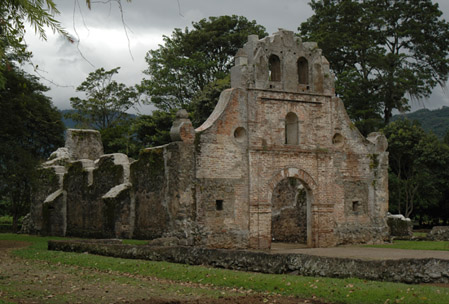 | We were now on the valley floor and visiting the ruins of Ujarras Church. The stone walls are more than eighteen inches thick, so without a major earthquake they will be there a long time. |
I read that the original Ujarras church was a wooden structure built in 1570. The present walls date from a reconstruction in the 1680s which was abandoned after a major earthquake in 1830. It is believable that these walls have been there since 1830.
This tree on the church grounds is called angel's trumpet tree. Sounds plausible - it has trumpetlike blooms about four inches long. We are now in the valley looking back up at the high ridge and can see the small shelter where those guys were happily eating lunch when we were up there.
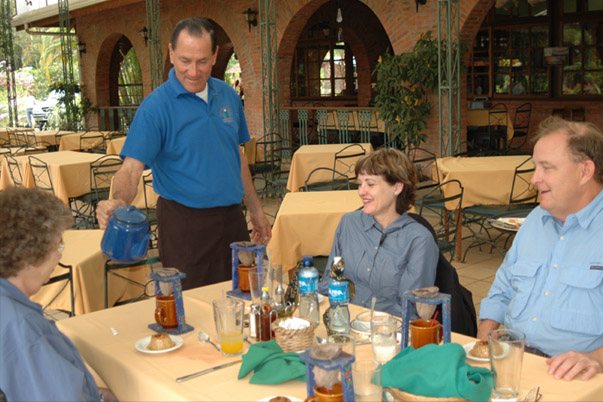
We had a very nice lunch at this elegant restaurant our in the coffee country of the Orosi valley. A real treat at the end of the meal was fresh ground Costa Rican coffee, probably grown right in this area. Our excellent host poured hot water directly through the ground coffee into our cups. I'd never seen it done that way before but it was very good with our traditional flan dessert.
We had a good time with our new friends from Dallas. It was nice to be able to share and compare our experiences of the day. |  |
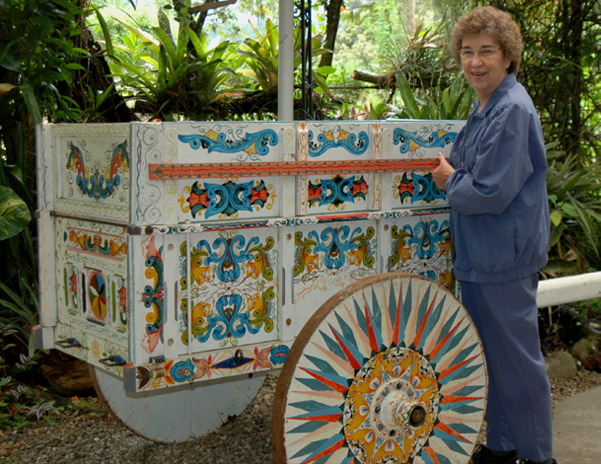
They had one of the brightly painted oxcarts which constitute one of the signature images of Costa Rica. So I had to get a picture of Brenda by the cart. In the background are all kinds of plants - anything will grow here, and it will grow all year long since the climate is almost constant except for a rainy season and a dry season.
We didn't get up close to coffee beans on the plants as I would have liked, but we saw lots of coffee fields like those above left. We also saw this crew of coffee pickers bringing their ripe coffee beans to the wagon. Our friends had taken the Britt coffee tour and highly recommended it, so we'll have to try that next time.
|
Index
2006
Costa Rica |



